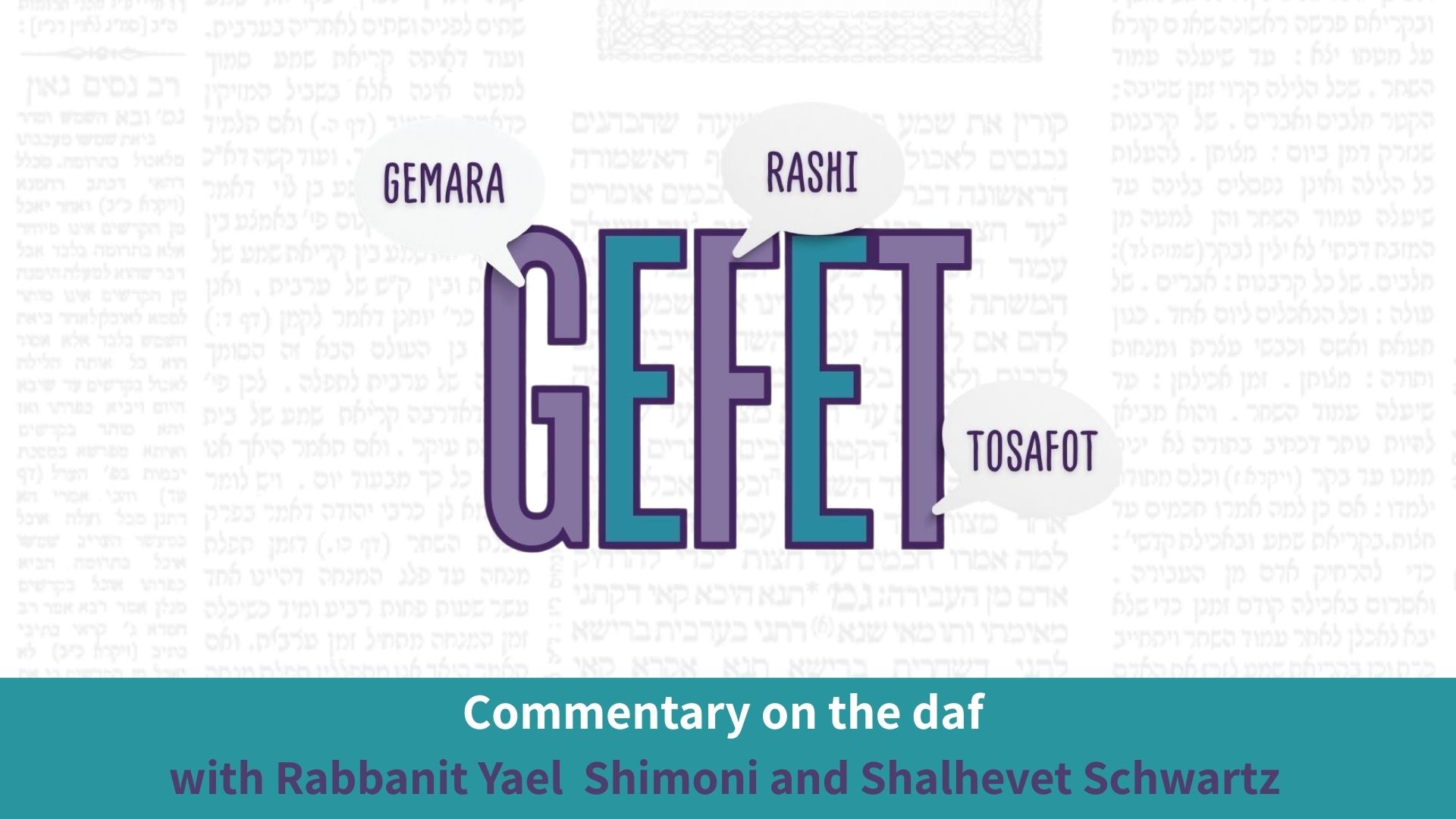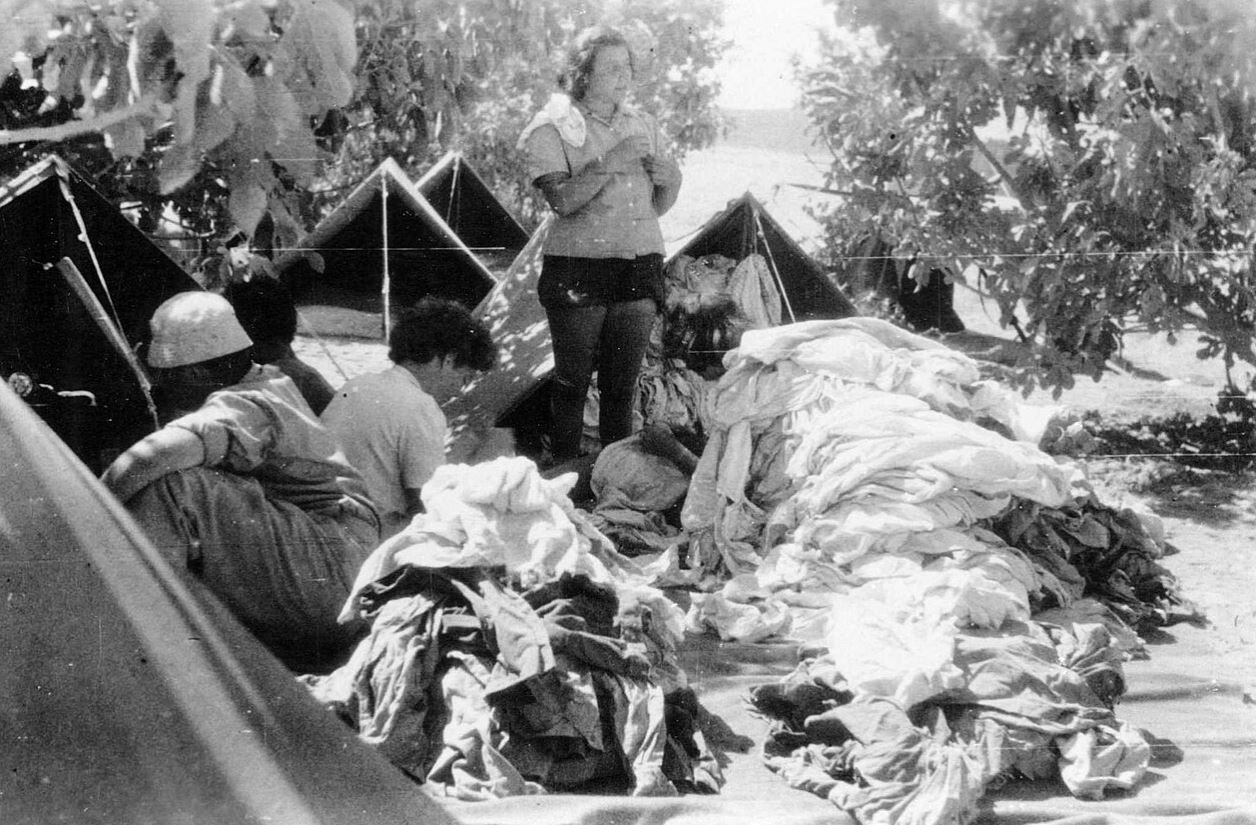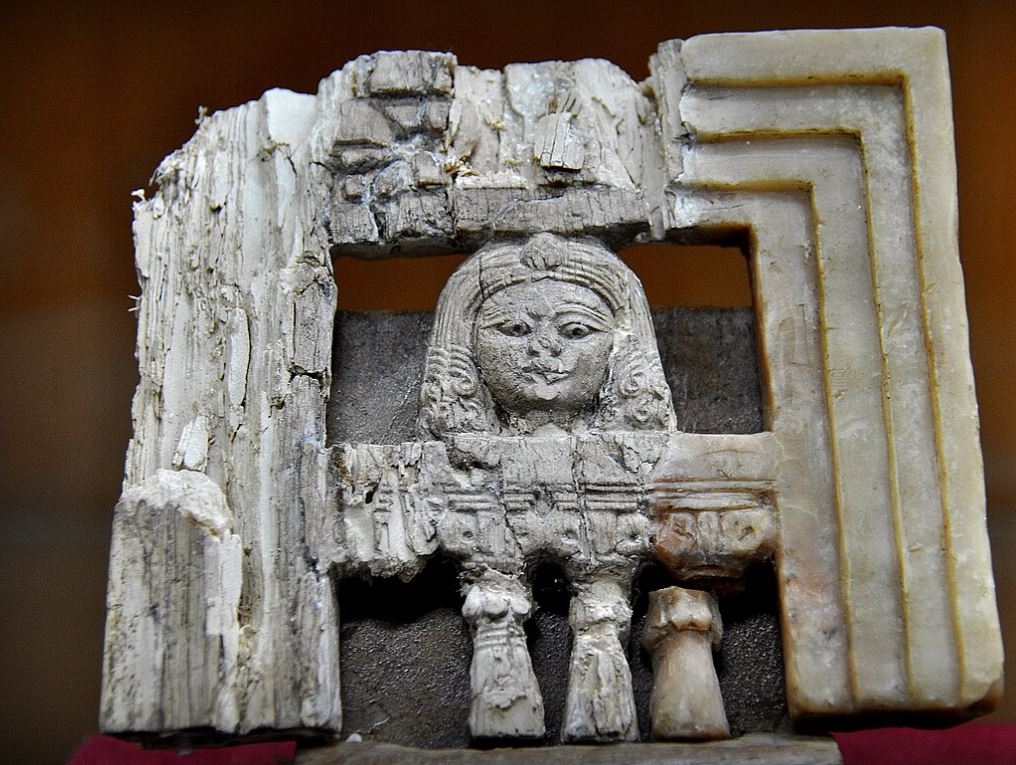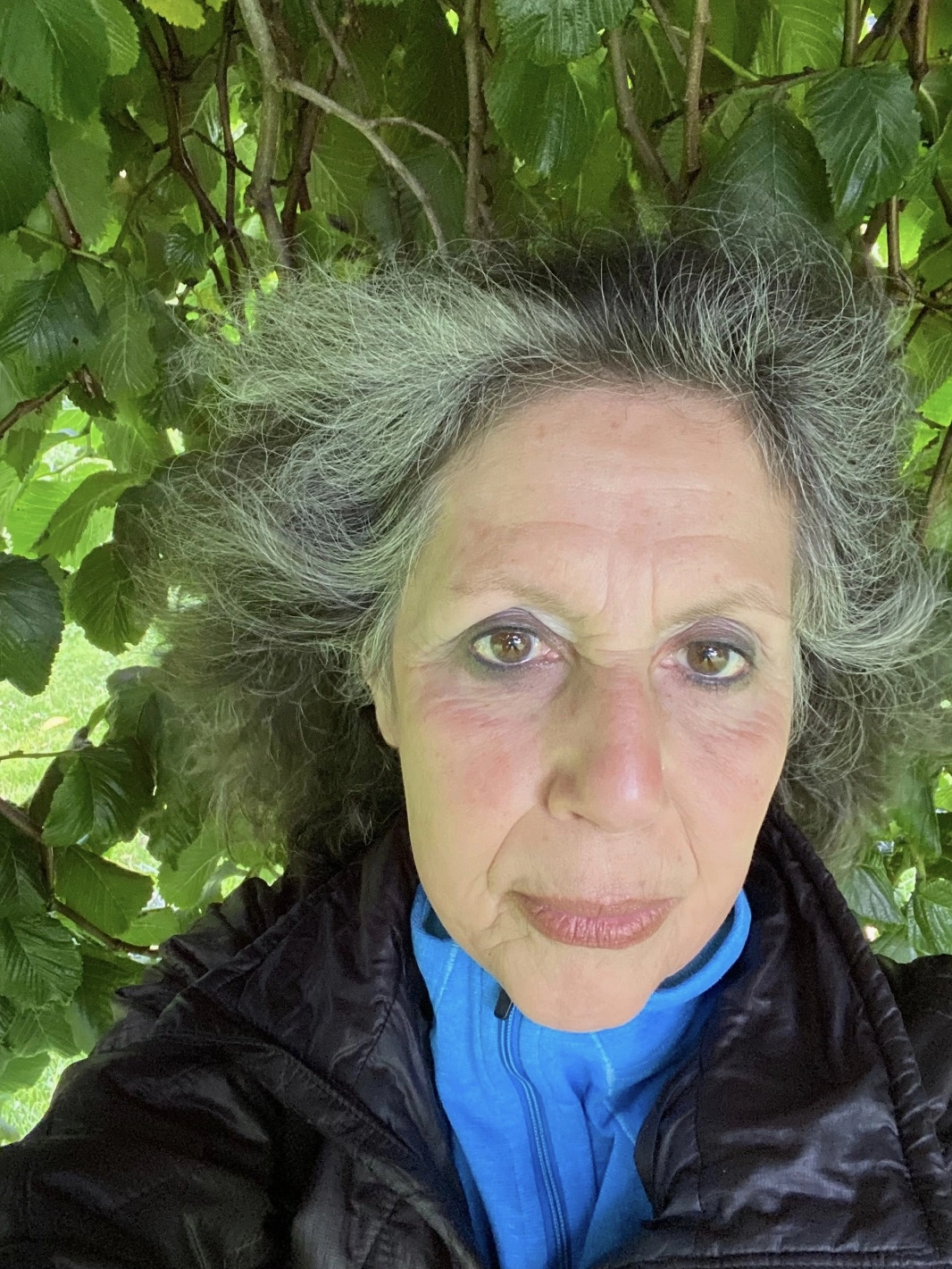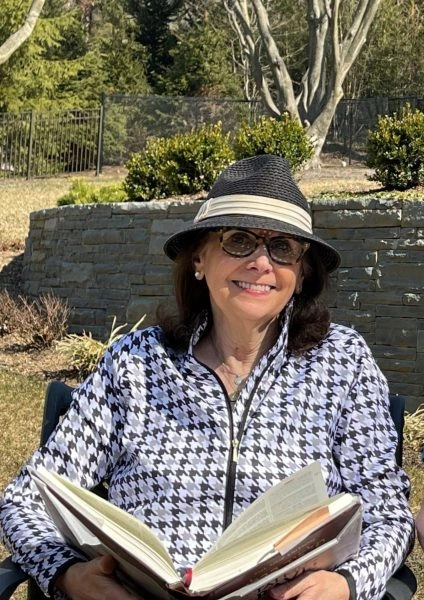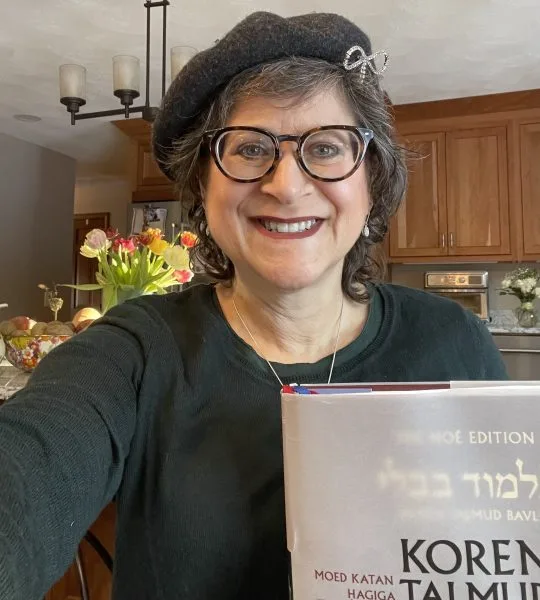Bava Batra 83
בְּדוּרָא דְרָעֲוָתָא, וַאֲתוֹ לְקַמֵּיהּ דְּרַב יְהוּדָה, וַאֲמַר לֵיהּ: ״זִיל הַב לֵיהּ כִּמְלֹא בָּקָר וְכֵלָיו״; וְלָא הֲוָה יָדַעְנָא ״כִּמְלֹא בָּקָר וְכֵלָיו״ כַּמָּה; כֵּיוָן דְּשַׁמְעִתַהּ לְהָא דִּתְנַן: לֹא יִטַּע אָדָם אִילָן סָמוּךְ לִשְׂדֵה חֲבֵירוֹ, אֶלָּא אִם כֵּן הִרְחִיק מִמֶּנָּה אַרְבַּע אַמּוֹת;
involving the sale of trees in a village of shepherds, and they came before Rav Yehuda, and he said to the seller: Go and give to the one who bought the trees sufficient land for an ox and its vessels. But I did not know how much was sufficient land for an ox and its vessels. When I heard that which we learned in a mishna (26a), I came to a conclusion with regard to this case. The mishna teaches as follows: A person may not plant a tree close by the field of another, unless he places it at a distance of four cubits from the other field.
וְתָנֵי עֲלַהּ: אַרְבַּע אַמּוֹת שֶׁאָמְרוּ – כְּדֵי עֲבוֹדַת הַכֶּרֶם; אָמֵינָא: שְׁמַע מִינַּהּ, ״כִּמְלֹא בָּקָר וְכֵלָיו״ – אַרְבַּע אַמּוֹת.
Rav Yosef continues: And it is taught in a baraita with regard to this mishna: The four cubits that the Sages stated are for the work of the vineyard, so that he does not take oxen and a plow into his neighbor’s field while tending to his vineyard. I studied this mishna and baraita and said: Learn from it that the phrase: Sufficient for the ox and its vessels, means four cubits. At this stage, the Gemara has demonstrated that Rav Naḥman’s opinion is supported by a mishna, whereas Rav Yosef’s ruling is supported by the incident involving Rav Yehuda.
וּכְרַב יוֹסֵף מִי לָא תְּנַן?! רַבִּי מֵאִיר וְרַבִּי שִׁמְעוֹן אוֹמְרִים: הַנּוֹטֵעַ אֶת כַּרְמוֹ שְׁמוֹנֶה אַמּוֹת עַל שְׁמוֹנֶה – מוּתָּר לְהָבִיא זֶרַע לְשָׁם!
The Gemara asks: But didn’t we also learn a ruling in a mishna (Kilayim 4:9) in accordance with the opinion of Rav Yosef? That mishna teaches: Rabbi Meir and Rabbi Shimon say: In a case of one who plants his vineyard eight cubits by eight cubits, i.e., he leaves eight cubits between each row of vines, it is permitted for him to bring seeds to the empty spaces between the rows. This ruling can be cited in support of the opinion of Rav Yosef that if there is a space of eight cubits between trees or vines they are not considered one unit. Why, then, is this mishna not brought as proof?
אֲפִילּוּ הָכִי, מַעֲשֶׂה עָדִיף.
The Gemara answers: Even so, it is preferable to cite the incident in Tzalmon as proof. Whenever possible, it is preferable to provide support for an opinion by means of a practical ruling, as it demonstrates that the Sages took action in accordance with that opinion and did not merely teach it as halakha in theory.
בִּשְׁלָמָא לְרַב יוֹסֵף אַלִּיבָּא דְּרַבִּי שִׁמְעוֹן – שָׁמְעִינַן לֵיהּ מְפוּזָּרִין, וְשָׁמְעִינַן לֵיהּ רְצוּפִין; מְפוּזָּרִין – הָא דַּאֲמַרַן, רְצוּפִין – דִּתְנַן: כֶּרֶם הַנָּטוּעַ עַל פָּחוֹת מֵאַרְבַּע אַמּוֹת – אֵינוֹ כֶּרֶם, דִּבְרֵי רַבִּי שִׁמְעוֹן. וַחֲכָמִים אוֹמְרִים: כֶּרֶם, וְרוֹאִין אֶת הָאֶמְצָעִיִּים כְּאִילּוּ אֵינָן.
The Gemara comments: Granted, according to the analysis of Rav Yosef stated in accordance with the opinion of Rabbi Shimon, we hear about the maximum distance that the trees can be scattered, and we hear about the minimum distance that they can be planted close together. The distance that the trees can be scattered is that which we said, i.e., eight cubits. The minimum distance that they can be planted close together is as we learned in a mishna (Kilayim 5:2): A vineyard that is planted in consecutive rows with less than four cubits between the rows is not classified as a vineyard, because the rows are planted too close together. This is the statement of Rabbi Shimon. And the Rabbis say: It is considered a vineyard, and one views the middle vines as if they are not there, as they are slated to be uprooted.
אֶלָּא לְרַב נַחְמָן אַלִּיבָּא דְּרַבָּנַן – מְפוּזָּרִין שָׁמְעִינַן לֵיהּ; רְצוּפִין מִי שָׁמְעִינַן לֵיהּ?! סְבָרָא הוּא: מִדִּלְרַבִּי שִׁמְעוֹן פַּלְגָא, לְרַבָּנַן נָמֵי פַּלְגָא.
But according to the analysis of Rav Naḥman stated in accordance with the opinion of the Rabbis, we hear the maximum distance that the trees can be scattered, i.e., sixteen cubits, as in the incident in Tzalmon. Concerning the minimum distance that they can be planted close together, did we hear this distance? The Gemara answers: This is based on logical reasoning; from the fact that according to Rabbi Shimon the minimum distance is half of the maximum distance, according to the Rabbis as well, the minimum distance is half of the maximum, i.e., eight cubits.
אָמַר רָבָא: הִלְכְתָא, מֵאַרְבַּע אַמּוֹת וְעַד שֵׁשׁ עֶשְׂרֵה. תַּנְיָא כְּווֹתֵיהּ דְּרָבָא: כַּמָּה יְהוּ מְקוֹרָבִין? אַרְבַּע אַמּוֹת, וְכַמָּה יְהוּ מְרוּחָקִין? שֵׁשׁ עֶשְׂרֵה.
Rava says: The halakha is that one who buys three trees acquires the land if the distance between the trees is anywhere from four cubits to sixteen cubits. This ruling is a combination of the two opinions, which is favorable to the buyer. It is taught in a baraita in accordance with the opinion of Rava: How close may they be? Four cubits. And how far apart may they be? Sixteen cubits.
הֲרֵי זֶה קָנָה קַרְקַע וְאֶת הָאִילָנוֹת שֶׁבֵּינֵיהֶן; לְפִיכָךְ, יָבֵשׁ הָאִילָן אוֹ נִקְצַץ – יֵשׁ לוֹ קַרְקַע. פָּחוֹת מִכָּאן אוֹ יָתֵר עַל כָּאן, אוֹ שֶׁלְּקָחָן בְּזֶה אַחַר זֶה – הֲרֵי זֶה לֹא קָנָה לֹא אֶת הַקַּרְקַע וְלֹא אֶת הָאִילָנוֹת שֶׁבֵּינֵיהֶן; לְפִיכָךְ, יָבֵשׁ הָאִילָן אוֹ נִקְצַץ – אֵין לוֹ קַרְקַע.
If one bought three trees planted in this manner, this one has acquired the land and the small trees that are between them. Therefore, if the tree dried up or was cut down he has ownership of the land. If the distance between the trees was less than this or more than this, or if he bought the trees one after the other, this buyer has not acquired either the land or the trees that are between them. Therefore, if the tree dried up or was cut down he has no ownership over the land.
בָּעֵי רַבִּי יִרְמְיָה: כְּשֶׁהוּא מוֹדֵד, מִמָּקוֹם קָצָר הוּא מוֹדֵד, אוֹ מִמָּקוֹם רָחָב הוּא מוֹדֵד? אֲמַר לֵיהּ רַב גְּבִיהָה מִבֵּי כְתִיל לְרַב אָשֵׁי: תָּא שְׁמַע, דִּתְנַן: הָרְכוּבָה שֶׁבַּגֶּפֶן – אֵינוֹ מוֹדֵד אֶלָּא מֵעִיקָּר הַשֵּׁנִי.
§ Rabbi Yirmeya raises a dilemma: When one measures the distance between the trees, does he measure from the narrow place on the trunk of the tree or does he measure from the wide place? Rav Geviha of Bei Khatil said to Rav Ashi: Come and hear a proof, as we learned in a mishna (Kilayim 7:1): When one comes to measure from the layered branch of the vine he measures only from the second root, as this is the average, not the widest part of the vine.
בָּעֵי רַבִּי יִרְמְיָה: מָכַר לוֹ שְׁלֹשָׁה בַּדֵּי אִילָן, מַהוּ?
Rabbi Yirmeya raises a dilemma: If the owner of the field sold to someone three branches that grew from one tree, and its trunk was covered with earth so that the branches appeared to be three separate trees, what is the halakha? Are they considered three trees, which would mean that their owner acquires the ground between them?
אֲמַר לֵיהּ רַב גְּבִיהָה מִבֵּי כְתִיל לְרַב אָשֵׁי: תָּא שְׁמַע, דִּתְנַן: הַמַּבְרִיךְ שָׁלֹשׁ גְּפָנִים, וְעִקְּרֵיהֶן נִרְאִין – רַבִּי אֶלְעָזָר בְּרַבִּי צָדוֹק אוֹמֵר: אִם יֵשׁ בֵּינֵיהֶן מֵאַרְבַּע אַמּוֹת וְעַד שְׁמוֹנֶה – מִצְטָרְפִין, וְאִם לָאו – אֵין מִצְטָרְפִין.
Rav Geviha of Bei Khatil said to Rav Ashi: Come and hear a proof, as we learned in a mishna (Kilayim 7:2): With regard to one who layers the branches of three vines into the ground so that they take root while still attached to the base of the vine, and their roots that rise above the ground are visible, Rabbi Elazar, son of Rabbi Tzadok, says: If there is a distance between them of four cubits to eight cubits, they combine to form one vineyard composed of six grapevines. And if not, they do not combine. It can be inferred from this mishna that the different branches of a tree are considered separate entities when the trunk is covered by earth, provided the required distance between them is maintained.
בָּעֵי רַב פָּפָּא: מָכַר לוֹ שְׁנַיִם בְּתוֹךְ שָׂדֵהוּ וְאֶחָד עַל הַמֶּצֶר, מַהוּ? שְׁנַיִם בְּתוֹךְ שֶׁלּוֹ וְאֶחָד בְּתוֹךְ שֶׁל חֲבֵירוֹ, מַאי? תֵּיקוּ.
Rav Pappa raises a dilemma: If the owner of a field sold to someone two trees in his field and one situated on its border, what is the halakha? Similarly, if one bought two trees in the field of one person and one in the field of another, what is the halakha? Do the trees combine to form one unit of three trees, or not? The Gemara states that this dilemma shall stand unresolved.
בָּעֵי רַב אָשֵׁי: בּוֹר, מַהוּ שֶׁתַּפְסִיק? אַמַּת הַמַּיִם, מַהוּ שֶׁתַּפְסִיק? רְשׁוּת הָרַבִּים מַהוּ? רִיכְבָּא דְּדִיקְלֵי מַהוּ? תֵּיקוּ.
Rav Ashi raises a dilemma: In the case of a pit situated between the trees, what is the halakha with regard to the possibility that it divides between the trees, and therefore the owner of the trees does not acquire the ground? Similarly, in the case of a stream of water, what is the halakha with regard to the possibility that it divides between the trees? With regard to the public thoroughfare that divides between trees, what is the halakha? Finally, in the case of a line of palm trees, what is the halakha? No answer is found for these problems, and the Gemara states that the dilemmas shall stand unresolved.
בְּעָא מִינֵּיהּ הִלֵּל מֵרַבִּי: עָלָה אֶרֶז בֵּינֵיהֶן, מַהוּ? ״עָלָה״?! בִּרְשׁוּתָא דִידֵיהּ נְפַק! אֶלָּא ״הָיָה אֶרֶז בֵּינֵיהֶן, מַהוּ?״ אֲמַר לֵיהּ: קָנָה וְקָנָה.
Hillel raises a dilemma before Rabbi Yehuda HaNasi: If a cedar grew between the three trees that one bought, what is the halakha? The Gemara asks: If it grew, then it emerged in his domain, as he already owns the ground, and therefore it is obvious that the cedar belongs to him. Rather, the dilemma is as follows: If, when one bought three trees, there already was a cedar between them, what is the halakha? Is it considered a division between the three trees? Rabbi Yehuda HaNasi said to him: Since he bought the trees, he has thereby acquired the cedar and acquired the land between them.
כֵּיצַד הֵן עוֹמְדִים? רַב אָמַר: כְּשׁוּרָה, וּשְׁמוּאֵל אָמַר: כַּחֲצוּבָא. מַאן דְּאָמַר כְּשׁוּרָה – כׇּל שֶׁכֵּן כַּחֲצוּבָא; וּמַאן דְּאָמַר כַּחֲצוּבָא – אֲבָל כְּשׁוּרָה לָא, מַאי טַעְמָא? מִשּׁוּם דְּמִיזְדְּרַע בֵּינְתַיְיהוּ.
The Gemara asks: In what manner must the three trees be positioned for the buyer to acquire the ground between them? Rav says: They may be planted in a straight line, and Shmuel says: They must be planted in the form of a tripod. The Gemara notes: According to the one who says that the trees may be positioned in a straight line, all the more so one acquires the ground when the trees are planted in the form of a tripod. But according to the one who says they must be positioned in a tripod, the buyer acquires the ground only in this case; but if the trees were planted in a straight line, he does not acquire the ground. What is the reason? It is because when the trees are planted in the form of a straight line one can sow between them, and therefore the seller would not relinquish his right to the ground between the trees.
מַתְקֵיף לַהּ רַב הַמְנוּנָא: וּלְמַאן דְּאָמַר כַּחֲצוּבָא, מַאי טַעְמָא – דְּלָא מִיזְדְּרַע בֵּינְתַיְיהוּ? אֶלָּא מֵעַתָּה, זַבֵּין לֵיהּ תְּלָת הִיגֵי רוֹמָיָיתָא, דְּלָא מִיזְדְּרַע בֵּינְתַיְיהוּ, הָכִי נָמֵי דְּיֵשׁ לוֹ קַרְקַע?! אָמַר לֵיהּ: הָנָךְ לָא חֲשִׁיבִי, הָנָךְ חֲשִׁיבִי.
Rav Hamnuna objects to this: And according to the one who says that the trees must be planted in the form of a tripod, what is the reason that one who buys the trees acquires the ground? Is it that one cannot sow between the trees? But if that is so, in a case where he sold him three Roman thorny shrubs, where one cannot sow between them, so too would he say that the purchaser has ownership of the ground? The other Sage said to Rav Hamnuna: Those Roman shrubs are not significant, as they are merely shrubs and not trees, and therefore the ground is not acquired when one purchases them. By contrast, these trees are important.
מַתְנִי׳ הַמּוֹכֵר רֹאשׁ בְּהֵמָה גַּסָּה – לֹא מָכַר אֶת הָרַגְלַיִם, מָכַר אֶת הָרַגְלַיִם – לֹא מָכַר אֶת הָרֹאשׁ. מָכַר אֶת הַקָּנֶה – לֹא מָכַר אֶת הַכָּבֵד, מָכַר אֶת הַכָּבֵד – לֹא מָכַר אֶת הַקָּנֶה. אֲבָל בְּדַקָּה; מָכַר אֶת הָרֹאשׁ – מָכַר אֶת הָרַגְלַיִם, מָכַר אֶת הָרַגְלַיִם – לֹא מָכַר אֶת הָרֹאשׁ. מָכַר אֶת הַקָּנֶה – מָכַר אֶת הַכָּבֵד, מָכַר אֶת הַכָּבֵד – לֹא מָכַר אֶת הַקָּנֶה.
MISHNA: One who sells the head of a large domesticated animal has not sold along with it the forelegs, as each part is considered important in its own right. All the more so, if one sold the forelegs he has not sold the head. Similarly, if one sold the windpipe and the lungs he has not sold the liver, despite the fact that they are sometimes attached, and if he sold the liver he has not sold the windpipe and lungs. But in the case of small domesticated animals, if one sold the head he has sold the forelegs, although if one sold the legs he has not sold the head. Likewise, if one sold the windpipe and lungs he has sold the liver, but if he sold the liver he has not sold the windpipe and lungs.
אַרְבַּע מִדּוֹת בַּמּוֹכְרִין: מָכַר לוֹ חִטִּין יָפוֹת וְנִמְצְאוּ רָעוֹת – הַלּוֹקֵחַ יָכוֹל לַחֲזוֹר בּוֹ. רָעוֹת וְנִמְצְאוּ יָפוֹת – מוֹכֵר יָכוֹל לַחֲזוֹר בּוֹ. רָעוֹת וְנִמְצְאוּ רָעוֹת; יָפוֹת וְנִמְצְאוּ יָפוֹת – אֵין אֶחָד מֵהֶם יָכוֹל לַחֲזוֹר בּוֹ.
There are four basic cases with regard to sellers and buyers. If the seller sold him wheat and said that the wheat was good, and it is found to be bad, the buyer, but not the seller, can renege on the sale. If the seller sold him what he thought was bad wheat and it is found to be good, the seller can renege on the sale but the buyer cannot. If he sold bad wheat and it is found to be bad, or good wheat and it is found to be good, neither one of them can renege on the sale, as the condition of the sale was met.
שְׁחַמְתִּית וְנִמְצֵאת לְבָנָה, לְבָנָה וְנִמְצֵאת שְׁחַמְתִּית; עֵצִים שֶׁל זַיִת וְנִמְצְאוּ שֶׁל שִׁקְמָה, שֶׁל שִׁקְמָה וְנִמְצְאוּ שֶׁל זַיִת; יַיִן וְנִמְצָא חוֹמֶץ, חוֹמֶץ וְנִמְצָא יַיִן – שְׁנֵיהֶם יְכוֹלִין לַחֲזוֹר בָּהֶן.
If the seller sold reddish-brown wheat and it is found to be white, or white wheat and it is found to be reddish-brown, and similarly, if he sold olive wood and it is found to be wood of a sycamore, or he sold wood of a sycamore and it is found to be wood of an olive tree, or if the seller sold him wine and it is found to be vinegar, or vinegar and it is found to be wine, in all of these cases both the seller and the buyer can renege on the sale. Since the sale was for a different item than that which was delivered, the transaction can be nullified even if there was no mistake with regard to the price.
גְּמָ׳ אָמַר רַב חִסְדָּא: מָכַר לוֹ שָׁוֶה חָמֵשׁ – בְּשֵׁשׁ, וְהוּקַר וְעָמַד עַל שְׁמֹנֶה, מִי נִתְאַנָּה? לוֹקֵחַ. לוֹקֵחַ יָכוֹל לַחֲזוֹר בּוֹ, וְלֹא מוֹכֵר; מִשּׁוּם
GEMARA: Rav Ḥisda says: If the seller sold him an item that was worth five dinars for six dinars, and the item became more expensive and its value stood at eight dinars, and the seller wished to return the money and cancel the sale because the item’s value had increased, who was exploited here? The buyer; therefore, the buyer, but not the seller, can renege on the sale, despite the fact that in such a situation the seller loses out. This is because




